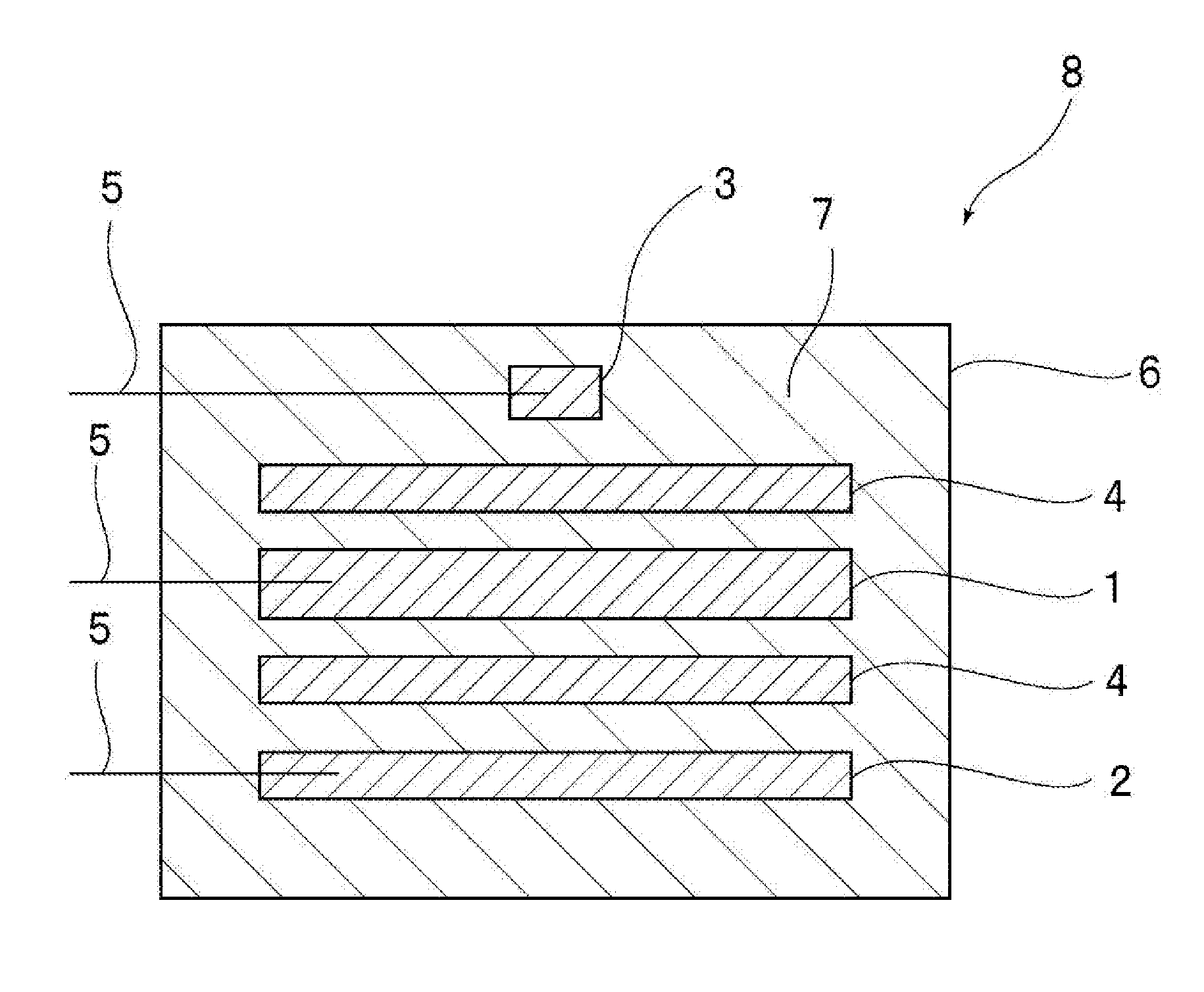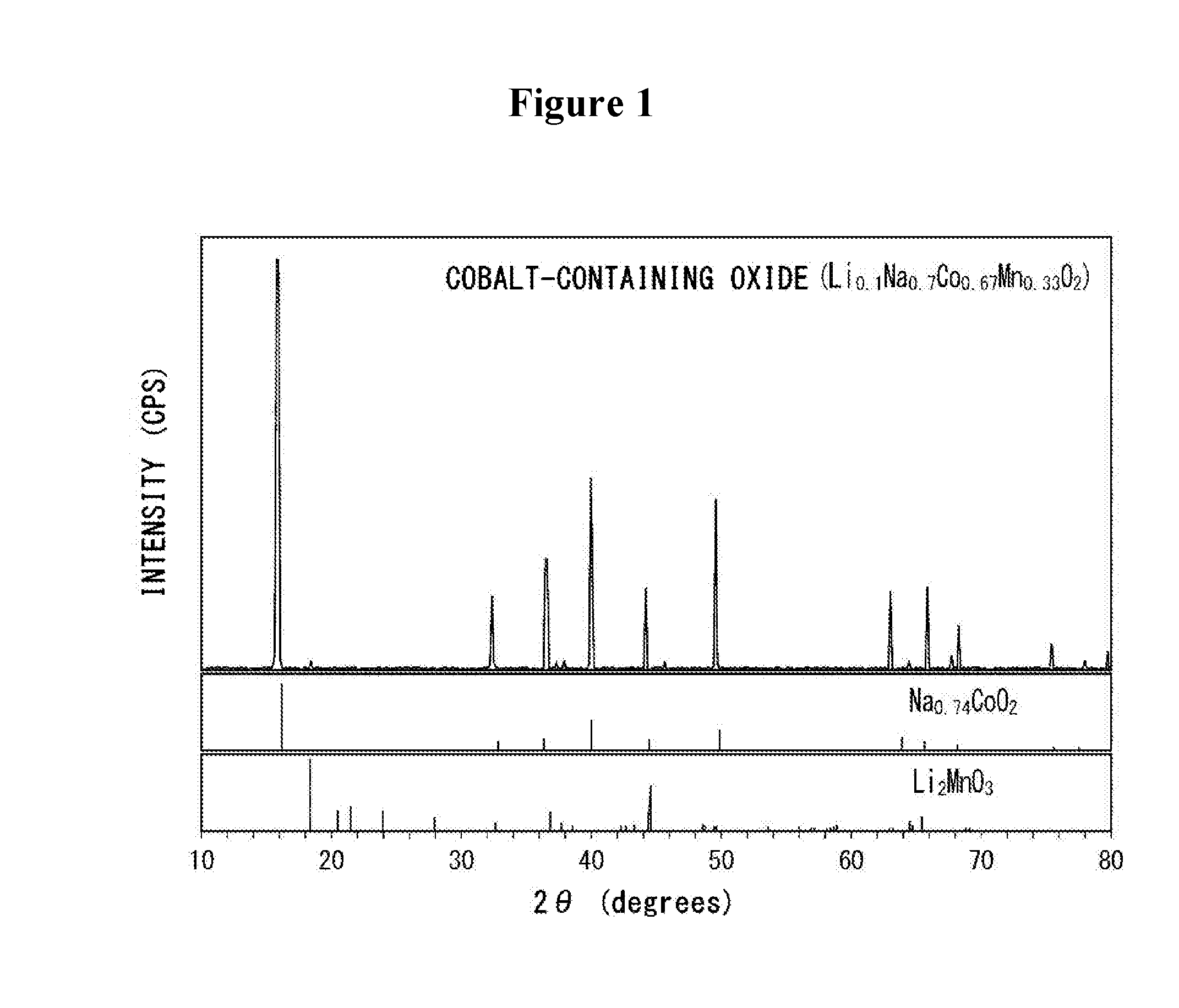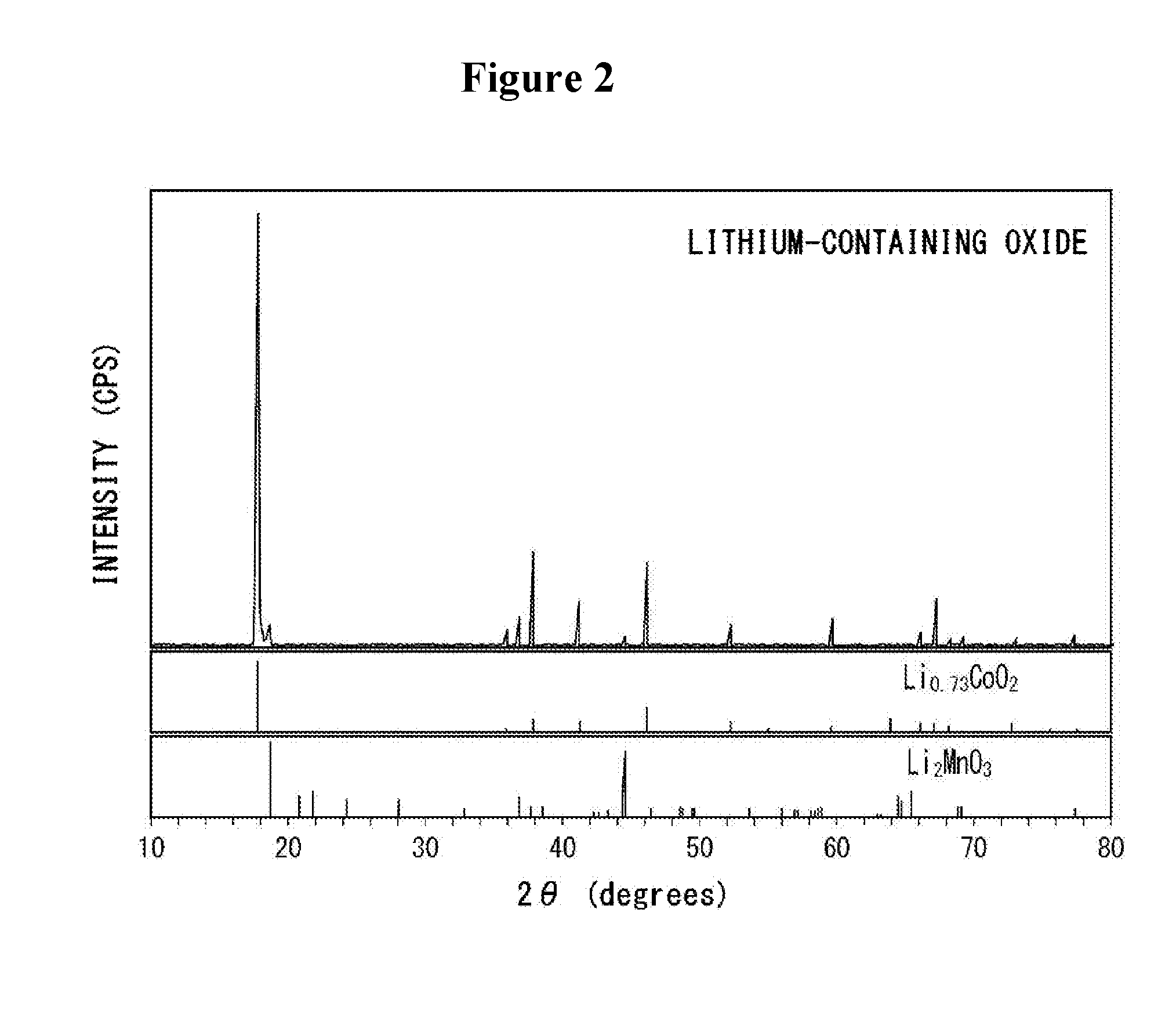Non-aqueous electrolyte secondary battery and method of manufacturing the same
a technology of non-aqueous electrolyte and secondary batteries, which is applied in the manufacture of final products, cell components, cobalt compounds, etc., can solve the problems of difficulty in having a sufficiently high true density, and achieve the effects of high true density, high capacity, and stable structur
- Summary
- Abstract
- Description
- Claims
- Application Information
AI Technical Summary
Benefits of technology
Problems solved by technology
Method used
Image
Examples
example 1
[0063]First, using sodium nitrate (NaNO3), lithium carbonate (Li2CO3), cobalt (II, III) oxide (Co3O4), and manganese (III) oxide (Mn2O3), a cobalt-containing oxide represented as Li0.1Na0.2Co0.62Mn0.33O2. More specifically, the just-mentioned starting materials were weighed so as to be a desired composition ratio, and they were mixed sufficiently. This mixture was placed in a furnace, and heated and kept at 900° C. for 10 hours, to prepare the cobalt-containing oxide.
[0064]The results of XRD measurements for the prepared cobalt-containing oxide are shown in FIG. 1, together with the results of XRD measurements for Na0.74CoO2 (PDF #87-0274) and Li2MnO3 (PDF #73-0152). In the present example, the radiation source for the XRD measurements used was CuKα.
[0065]Next, a portion of sodium contained in the cobalt-containing oxide was ion exchanged with lithium, using a fused salt bed in which 88 mol % of lithium nitrate (LiNO3) and 12 mol % of lithium chloride (LiCl) were mixed. Thereby, a l...
example 2
[0072]A lithium-containing oxide and a test cell were prepared in the same manner as described in Example 1 above, except that a cobalt-containing oxide represented as Li0.2Na0.7Co0.67Mn0.33O2 was used, and the charge-discharge characteristics of the test cell were evaluated.
example 3
[0073]A lithium-containing oxide and a test cell were prepared in the same manner as described in Example 1 above, except that a cobalt-containing oxide represented as Li0.3Na0.7Co0.67Mn0.33O2 was used, and the charge-discharge characteristics of the test cell were evaluated.
PUM
| Property | Measurement | Unit |
|---|---|---|
| density | aaaaa | aaaaa |
| density | aaaaa | aaaaa |
| density | aaaaa | aaaaa |
Abstract
Description
Claims
Application Information
 Login to View More
Login to View More - R&D
- Intellectual Property
- Life Sciences
- Materials
- Tech Scout
- Unparalleled Data Quality
- Higher Quality Content
- 60% Fewer Hallucinations
Browse by: Latest US Patents, China's latest patents, Technical Efficacy Thesaurus, Application Domain, Technology Topic, Popular Technical Reports.
© 2025 PatSnap. All rights reserved.Legal|Privacy policy|Modern Slavery Act Transparency Statement|Sitemap|About US| Contact US: help@patsnap.com



